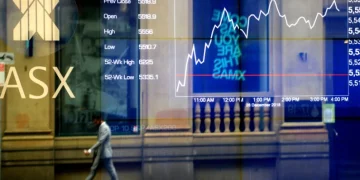Introduction
Between January and May 2025, a surprising correlation emerged in financial data that had long been dismissed by traditional analysts: the relationship between Twitter sentiment around oil prices and broader U.S. stock market volatility. According to a joint study by two alternative data firms, the Pearson correlation coefficient between oil-related Twitter sentiment and the CBOE Volatility Index (VIX) reached 0.68—a statistically significant figure that cannot be easily ignored. The surge in emotion-driven commentary on social platforms has paralleled increasing volatility in energy stocks and spilled over into broader equity indices. This raises an increasingly urgent question: Are social media sentiment swings, especially on platforms like Twitter, becoming a real-time driver of investor behavior and volatility in the U.S. equity market?
The Sentiment-Oil-Volatility Nexus: Breaking Down the Numbers
At the heart of the correlation is the sheer volume of data generated by retail and institutional participants expressing views on oil prices in real time. During the first five months of 2025, oil-related tweets spiked during key geopolitical events such as escalations in the Red Sea and OPEC+ production guidance changes. According to analytics from FinSentiment AI, days with a high volume of negative oil sentiment—indicating expectations of price spikes, supply shocks, or demand weakness—correlated strongly with spikes in the VIX and dips in the S&P 500.
For example, on March 14, when rumors of Iranian tanker strikes surfaced, negative oil sentiment on Twitter increased 210% versus the weekly average. On the same day, the VIX jumped 12% and energy-heavy indices like the S&P 500 Energy sector fell over 2.3%. Similar patterns repeated in April and early May when Brent crude crossed the $95 mark and Twitter users speculated on inflationary risks.
The idea that real-time emotional response to oil price movement can precede or reflect market behavior is not new. What’s different in 2025 is the speed, scale, and machine readability of that sentiment. Natural language processing (NLP) algorithms are now embedded into institutional trading models, ingesting Twitter data, keyword density, hashtag trends, and even emoji usage to flag volatility risks. This technological sophistication has blurred the line between “market noise” and “market signal.”
From Oil Sentiment to Broader Market Ripples
The primary transmission channel from oil sentiment to broader equity volatility is investor risk appetite. Oil remains a macro barometer, reflecting inflation pressure, geopolitical risk, and demand health. As a result, sentiment swings in oil often act as a proxy for broader economic anxiety.
When oil sentiment turns negative—such as concerns about supply disruptions or unexpected price surges—investors adjust their portfolio exposure not just in energy names, but in rate-sensitive and cyclical sectors as well. This often leads to broader rebalancing across asset classes. Technology stocks, despite being unrelated to oil fundamentals, have experienced sharp drawdowns on days when oil sentiment plummeted and inflation fears spiked.
Inversely, positive sentiment spikes—especially those tied to declining oil prices—have supported rallies in consumer discretionary and transportation sectors, suggesting that investors are treating oil sentiment as a high-frequency macro input.
This behavioral spillover is visible in ETF flows. In Q1 2025, data from EPFR Global showed significant intraday volatility in ETFs like XLE (Energy Select Sector SPDR Fund) and SPY (SPDR S&P 500 ETF Trust) on days of large sentiment shifts. When oil sentiment was strongly negative for multiple days, outflows from equity funds followed—indicating that sentiment is not just mirroring fear, but possibly accelerating it.
Expert Disagreement: Structural Signal or Social Hype?
This evolving dynamic has triggered debate among analysts, traders, and data scientists. On one end of the spectrum, Morgan Stanley released a report in April titled “Sentiment Volatility: The New Macro Signal,” arguing that social sentiment captures leading indicators of market risk. They assert that since oil prices reflect a tight balance between demand and supply, sentiment swings reflect early signals of disruptions or price asymmetry—thus acting as a forward guide for volatility.
Morgan Stanley strategists argue that Twitter sentiment—when processed through AI filters that strip out spam and non-informative content—can be as predictive as hard economic data. They highlight the example of March’s sentiment spike, which preceded an oil price rally and VIX surge by nearly 24 hours, giving institutional clients an actionable edge.

On the other side are social media analysts and behavioral economists who warn against overreliance. According to Dr. Nina Patel, a cognitive economist at NYU, “Twitter amplifies extremes. It’s an emotional echo chamber that can distort perception more than it reflects reality.” Patel notes that during the week of the March 14 oil panic, sentiment data was dominated by a handful of viral influencers, some of whom were later found to have links to commodity futures positions—raising questions about manipulation.
Fintech blog MacroNarratives also published a critique, suggesting that while sentiment data is useful for confirming trends, it’s too noisy to act as a standalone trigger. “Correlation is not causation,” they argue. “The VIX may rise on days when oil sentiment worsens, but both could be responding to a third factor—like Middle East headlines or inflation fears.”
This divide reflects broader tensions in financial analysis: the clash between quantifiable models and qualitative noise, between traditional macro frameworks and real-time behavioral data.
Implications for Investors: How Should Portfolios React?
Whether social media sentiment is a structural input or just high-frequency noise, its growing integration into risk models means investors can’t ignore it. What matters is how to use it intelligently.
In a bullish scenario, where oil prices stabilize and sentiment normalizes, volatility could recede and risk assets rebound. Investors may benefit from tracking sentiment inflection points to identify reentry opportunities, particularly in oversold cyclical sectors.
In a neutral scenario, oil sentiment remains volatile but without triggering large price swings. Here, sentiment acts more like a weather report—helpful for positioning but not predictive. In this case, tactical traders may use intraday sentiment shifts for short-term options trades, while long-term investors stay focused on fundamentals.
In a bearish scenario, geopolitical shocks or supply constraints push oil sentiment into sustained negativity. This could lead to persistent market anxiety and prolonged risk-off episodes. Under this setup, watching real-time sentiment data becomes critical for adjusting exposure, raising hedges, or moving into cash-like assets.
For institutional traders, AI-filtered Twitter sentiment may already be part of volatility forecasting models. For retail investors, tools like MarketPsych or proprietary dashboards can provide filtered views of macro sentiment swings.
Three indicators worth watching include:
- The rolling 7-day average of oil-related tweet volume and polarity
- Correlation between energy sector ETF performance and VIX changes
- Changes in high-frequency sentiment score dispersion between institutional and retail accounts
These tools help separate noise from signal and allow for smarter positioning during sentiment-driven volatility.
Conclusion
The correlation between oil-related Twitter sentiment and U.S. equity volatility in early 2025 is more than a passing trend—it may reflect a structural shift in how markets digest information. As financial systems become more responsive to real-time data, emotional signals from platforms like Twitter are becoming part of the macro narrative. Whether this marks a permanent change or a temporary anomaly remains uncertain. But one thing is clear: investors can no longer afford to ignore the emotional undercurrents of digital chatter when assessing volatility risk. Will future risk models elevate sentiment to the same level as earnings and rates—or will it remain a shadow signal, useful but unreliable?








































